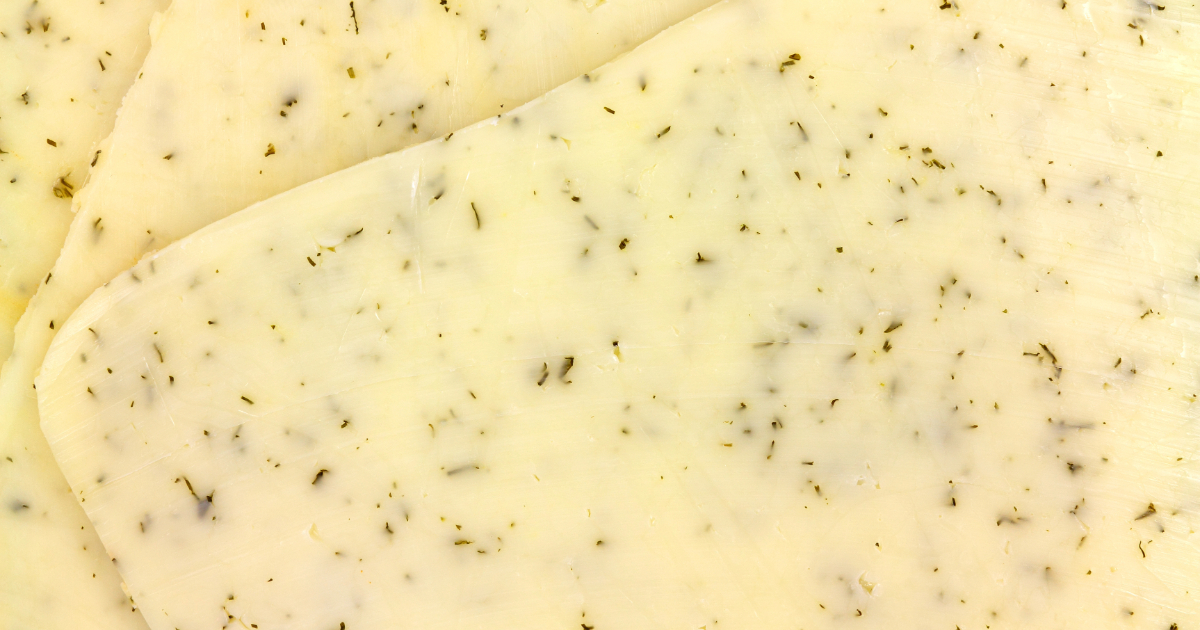Havarti and mozzarella are two popular types of cheese that have some similarities but also key differences.

Both havarti and mozzarella are semi-soft cheeses made from cow's milk. They have a creamy, smooth texture and melt well, making them useful for cooking. However, havarti originated in Denmark while mozzarella comes from Italy. Due to their different origins and production methods, they have distinct flavors, textures, nutritional profiles, and best uses.
Nutrition Comparison
Havarti and mozzarella have some nutritional similarities but also key differences, as shown in this nutrition comparison table:
| Nutrient | Havarti (per 100g) | Mozzarella (per 100g) |
|---|---|---|
| Calories | 376kcal | 300kcal |
| Protein | 25g | 22g |
| Fat | 29g | 22g |
| Carbs | 3g | 2g |
| Calcium | 673mg | 505mg |
| Vitamin A | 1054IU | 676IU |
| Vitamin B12 | 0.27μg | 2.28μg |
As shown in the table, havarti contains more calories, fat, and calcium per serving compared to mozzarella. In contrast, mozzarella has nearly 10 times more vitamin B12. Both cheeses are good sources of protein.
So if you're looking to add more calcium to your diet, havarti may be a better choice. But mozzarella would be better if you want to increase vitamin B12 intake. Both contribute protein, though havarti edges out mozzarella slightly in this department.
Key Takeaway: Havarti is higher in calories, fat, and calcium while mozzarella has more vitamin B12. Both are decent sources of protein.
Flavor and Aroma Comparison
Since they originate from different countries, havarti and mozzarella unsurprisingly have very distinct flavors and aromas:
- Havarti has a rich, buttery flavor with hints of hazelnut. It smells fresh, creamy, and slightly tangy. The flavor is mild.
- Mozzarella tastes mildly milky and salty, with a subtle sweetness. It has a fresh milky aroma. The soft version is very mild while aged mozzarella has a stronger salty flavor.
So in essence, havarti offers a more complex flavor with nutty notes while mozzarella has a simpler, fresher dairy-like taste. Havarti’s flavor tends to be more mild and approachable even when aged.
When cooking, havarti’s mild flavor means it adapts well to other ingredients without overpowering them. Mozzarella’s subtler taste also complements other foods nicely. So the type of dish you're making should inform your cheese choice.
Key Takeaway: Havarti has a mildly nutty and tangy flavor while mozzarella tastes fresh, milky, and slightly salty.
Texture Comparison
Though both semi-soft, havarti and mozzarella differ in some texture attributes:
- Havarti has a smooth, supple, sliceable texture. When heated, it becomes very creamy.
- Mozzarella is lightly springy and moist, especially fresh mozzarella. Low-moisture mozzarella is drier but still softer than havarti. When melted, mozzarella gets extremely soft and stretchy.
So mozzarella offers more of an elastic, chewy texture due to its higher moisture content. Havarti is sliceable and also creamy when warm but not as stringy and stretchy as melted mozzarella.
The meltability of both cheeses makes them useful in cooking. But mozzarella’s distinct melted texture is especially desirable for pizza, lasagna, sandwiches, and more. Havarti’s creamy melting properties have their own advantages though, for instance when making dips, sauces, soups, or mac and cheese.
Key Takeaway: Havarti has a smooth, creamy texture while mozzarella is lightly springy and incredibly stretchy when melted.
Best Uses Comparison
Due to their differing flavors, textures, and meltability, havarti and mozzarella each shine in certain culinary applications:
- Havarti works well in grilled cheese, sandwiches, charcuterie boards, dips, cream sauces, soups, mac and cheese, burgers, omelets, pizza, and quiches due to its mild flavor and creamy melted texture.
- Mozzarella is best used for pizza, lasagna, ravioli, bruschetta, caprese salad, sandwiches, paninis, and pasta dishes because of its fresh milky taste and stretchy melted consistency. Fresh mozzarella also shines when eaten plain with bread or crackers.
Havarti’s adaptability makes it an excellent all-purpose cheese for cooking and snacking. But for dishes where you want those signature mozzarella stretchy cheese pulls, like pizza, nothing melts quite like fresh or low-moisture mozzarella.
Consider the texture and flavor you want in your application when choosing between havarti vs. mozzarella. Their differing strengths make them suited for various uses.
Key Takeaway: Havarti melts nicely into creamy dishes while mozzarella is perfect for pizza, lasagna, and dishes requiring stretchy melted cheese.
Price Comparison
Havarti tends to cost slightly more than most mozzarella:
- Havarti - $6 to $15 per pound
- Mozzarella - $4 to $12 per pound
This price difference comes down to a few factors. Havarti is generally imported from Denmark, which increases costs. Making authentic mozzarella also requires specialized skill, especially hand-stretched fresh mozzarella. But larger commercial producers streamline its production to reduce pricing.
Additionally, high moisture content causes mozzarella’s yield to exceed havarti’s during cheesemaking, which decreases its cost to produce. Havarti’s more involved aging process also bumps up prices a bit.
So you’ll likely save a little money buying mozzarella pound for pound. But high-quality artisanal cheeses can get pricy regardless of type. Consider your budget but also prioritize taste and texture quality depending on application.
FAQs
What cheese has a more pungent smell and flavor?
Generally mozzarella will have a milder aroma and flavor, even when aged for months. Havarti can take on stronger nutty, tangy notes with longer aging. But both are relatively mild compared to pungent blue cheeses like gorgonzola.
Can you use havarti when a recipe calls for mozzarella?
In most cases, yes. Havarti can substitute well for mozzarella thanks to its meltability, mild flavor, and similar fat content. Just keep in mind that havarti won't offer that ultra-stretchy melted texture mozzarella is prized for. Adjust saltiness as needed.
Is one cheese healthier than the other?
Both cheeses can have a place in a healthy diet. Havarti has more calcium which is good for bone health while mozzarella offers more vitamin B12 for energy and cell health. Havarti is higher in fat though, so monitor consumption if that’s a concern. Both provide ample protein. Portion size and consumption frequency determines which cheese might be "healthier" overall.
Conclusion
Havarti and mozzarella make excellent additions to a wide variety of dishes thanks to their meltability and mild flavors. At a basic level, they share some key similarities as semi-soft cow's milk cheeses.
But havarti offers a tangy, creamy flavor with a sliceable texture while mozzarella boasts an appealing milky taste and stretchiness when melted.

